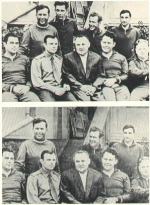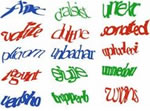¿Por qué Google quiere comprar 6.000 patentes?: "
 Google anunció al mundo sus intenciones de adquirir cerca de 6.000 patentes provenientes Nortel, el una vez gigante de las telecomunicaciones. En un pequeño post titulado “Patentes e Innovación”, Google afirma que
Google anunció al mundo sus intenciones de adquirir cerca de 6.000 patentes provenientes Nortel, el una vez gigante de las telecomunicaciones. En un pequeño post titulado “Patentes e Innovación”, Google afirma que
El mundo tecnológico ha visto recientemente una explosión en litigaciones relacionadas con patentes, con frecuencia sobre patentes de software de baja calidad que amenazan con ahogar la creatividad.
Google piensa que el sistema de patentes debería premiar a quienes ofrecen las innovaciones más útiles para la sociedad —supongo que esto incluye patentar los doodles—, y añade:
Algunas de esas demandas han sido impulsadas por personas o compañías que nunca han creado nada; otros han sido motivados por el deseo de bloquear los productos o beneficios del éxito de la nueva tecnología de su rival.
Es evidente. Con esas palabras Google nos comparte su opinión sobre las amenazas de demanda que la empresa recibe últimamente de Oracle o Microsoft.
Google quiere una reforma para el sistema de patentes de los EE. UU. En tanto eso sucede, considera que la única forma de defender a largo plazo su posición como empresa innovadora de los ataques de esas otras que no lo son —los trolls de las patentes—, es incrementar de gran manera su portafolio de patentes. Por eso Google ofreció 900 millones de dólares a Nortel, para adquirir su rico portafolio de patentes en redes inalámbricas, telefonía 4G, redes de datos, ópticas, voz, incluso relacionadas con semiconductores, redes sociales, búsqueda en Internet y más sobre telecomunicaciones.
Para quienes no lo sepan, Nortel es una empresa de telecomunicaciones de clase mundial que entró en un periodo protección por bancarrota a partir de enero de este año. Como consecuencia, está subastando todos sus bienes, entre ellos toda su propiedad intelectual.
Sin rodeos, Google deja en claro que quiere esas patentes para no ser blanco fácil de demandas —contra Android, sobre todo—. También, dice, las quiere para seguir apoyando la innovación de sus socios y la comunidad open source.
Google es una compañía relativamente joven, y aunque contamos con un número creciente de patentes, muchos de nuestros competidores tienen portafolios más numerosos porque su historia es más larga.
Lo dicho por Google nos da a entender que para sobrevivir en el hostil mundo de las patentes mientras más grande el portafolio, mejor. El problema es que en juegos como ése, donde no existe un equilibrio natural y cada cual ve por su propio beneficio o bien dañar el de los demás, hace su aparición el monopolio de las ideas.
¿Por qué Google quiere comprar 6.000 patentes? escrita en ALT1040 el 4 April, 2011 por alan.lazalde
Enviar a Twitter | Compartir en Facebook



"

 The Soviet Union used their space program as one of the front line battles of the Cold War. And for a time they were ahead, as anyone who remembers Sputnik and Gagarin will tell you. They had an edge in that reaching their goals was more important to the nation than the lives of the cosmonauts. Documentation on the cosmonauts is limited, and some evidence has been altered, such as the disappearing cosmonaut in the photo here. Then there was Voskhod 2, the mission featuring the first space walk.
The Soviet Union used their space program as one of the front line battles of the Cold War. And for a time they were ahead, as anyone who remembers Sputnik and Gagarin will tell you. They had an edge in that reaching their goals was more important to the nation than the lives of the cosmonauts. Documentation on the cosmonauts is limited, and some evidence has been altered, such as the disappearing cosmonaut in the photo here. Then there was Voskhod 2, the mission featuring the first space walk. If you think that
If you think that 
 Halifax Water is warning residents to be careful about what they pour down the kitchen sink after an accumulation of bacon fat clogged sewage pipes in the Ridgevale Drive subdivision in Bedford.
Halifax Water is warning residents to be careful about what they pour down the kitchen sink after an accumulation of bacon fat clogged sewage pipes in the Ridgevale Drive subdivision in Bedford.
 Google anunció al mundo sus intenciones de adquirir cerca de
Google anunció al mundo sus intenciones de adquirir cerca de 






